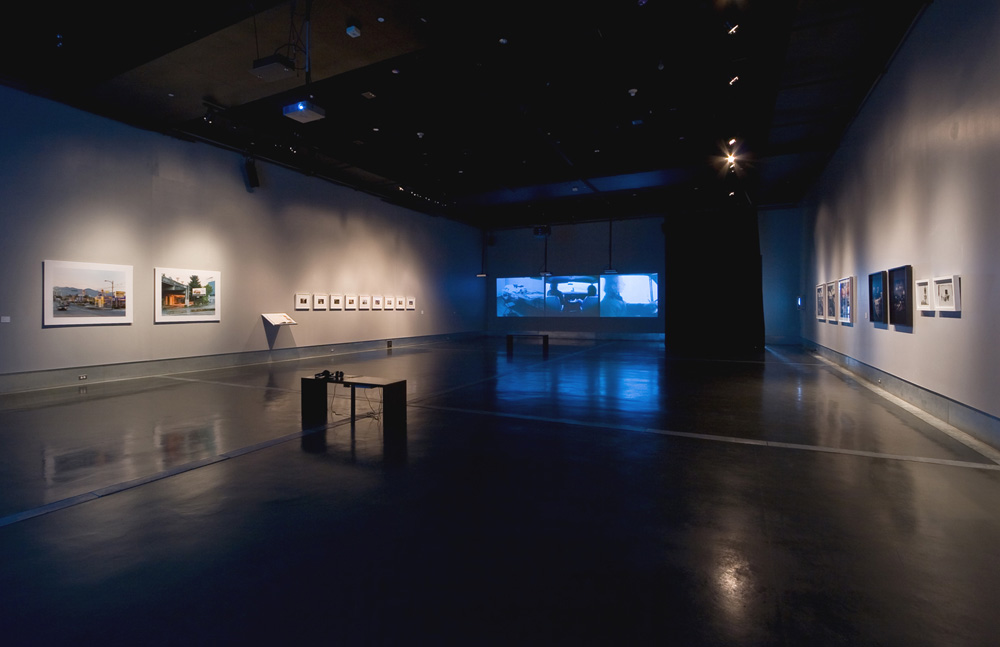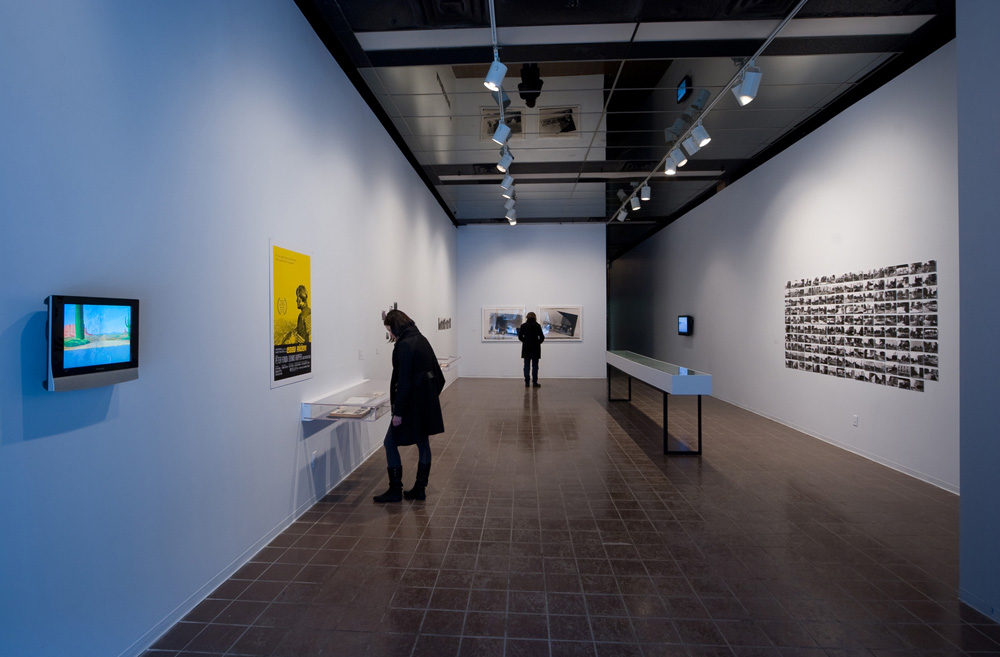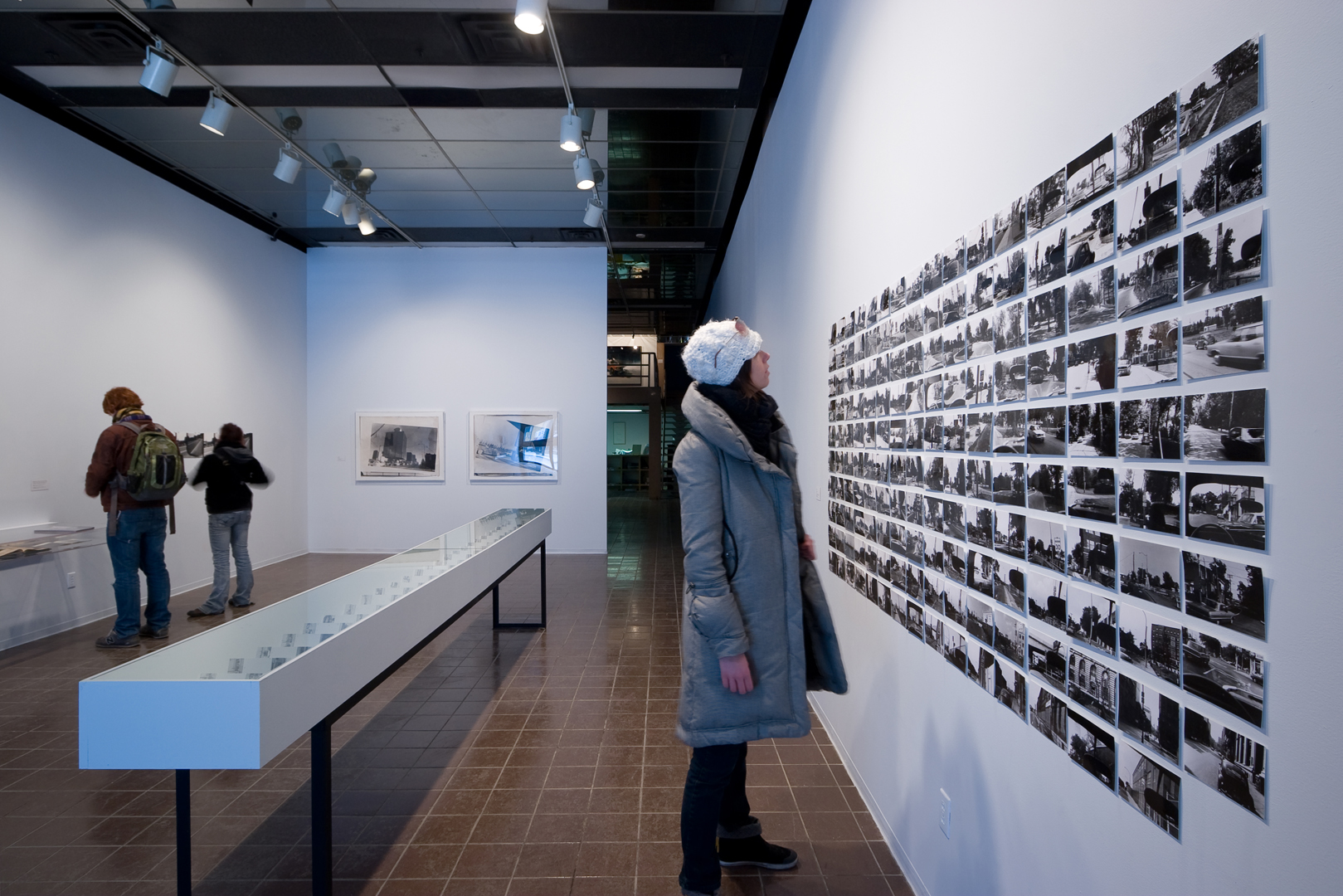Road Runners
2009.03.06 — 2009.05.30
Ant Farm, Robert Barry, Michel de Broin, Chris Burden, Hans-Peter Feldmann, Peter Gnass, Rodney Graham, Abbas Kiarostami, Margaret Lawther, John Massey, Simon Morris, Iain Baxter& N.E. Thing Co., Edward Ruscha, Jon Sasaki, Roman Signer, Stephen Shore, Kerry Tribe, Bill Vazan, Jeff Wall et Ian Wallace
La manifestation Road Runners présentée simultanément à VOX et à la salle Norman-McLaren de la Cinémathèque québécoise réunit des œuvres et des documents des années 1920 à aujourd’hui. Elle sera complétée par une programmation de films intitulée Sur les routes, expressément élaborée par les conservateurs de la Cinémathèque québécoise.
Road Runners, presented concurrently at VOX and at the Norman McLaren Gallery of the Cinémathèque québécoise, brings together works and documents from the 1920s to the present day. It will be complemented by a cycle of films entitled Sur les routes, put together especially for the occasion by the Cinémathèque’s curators
 La route et
l’automobile sont le sujet et l’objet d’œuvres littéraires, cinématographiques
et artistiques significatives qui constituent le fondement d’un genre
transdisciplinaire en évolution constante. Ce genre, désigné ici par le terme
« Road Runner », se cristallise au cours des années 1950 et 1960 avec la
parution du roman Sur la route de Jack Kerouac, l’expérience esthétique faite par Tony Smith sur
une autoroute et la sortie du film Easy Rider de Dennis Hopper. Bien que le road runner soit caractérisé par des
attitudes et des motifs variés, il n’en demeure pas moins que la route et l’automobile
produisent, dans l’une ou l’autre de leurs formes, de nouveaux modes de
représentation et de perception.
La route et
l’automobile sont le sujet et l’objet d’œuvres littéraires, cinématographiques
et artistiques significatives qui constituent le fondement d’un genre
transdisciplinaire en évolution constante. Ce genre, désigné ici par le terme
« Road Runner », se cristallise au cours des années 1950 et 1960 avec la
parution du roman Sur la route de Jack Kerouac, l’expérience esthétique faite par Tony Smith sur
une autoroute et la sortie du film Easy Rider de Dennis Hopper. Bien que le road runner soit caractérisé par des
attitudes et des motifs variés, il n’en demeure pas moins que la route et l’automobile
produisent, dans l’une ou l’autre de leurs formes, de nouveaux modes de
représentation et de perception. 



Ce paradigme donnera lieu à de nombreuses œuvres, à
partir de la fin des années 1960, dont la route détermine la structure alors
que la voiture y représente un atelier ambulant d’où le conducteur observe le
monde qui défile en continu sur les écrans de ses vitres. Le cadrage des images
est souvent redoublé par le cadre resserré des vitres de la voiture et le
paysage aperçu se superpose aux visions reflétées par le pare-brise et les
rétroviseurs.
Cette manière
d’observer le monde, largement répandue en Amérique du Nord et en particulier
au Canada, aura une influence très grande sur plusieurs artistes conceptuels
qui feront usage de la photographie pour en rendre compte. La vision,
auparavant perçue comme étant transparente, devient le sujet même de leur
production.
Suite
Suite





The
road and the automobile are subjects and objects of major literary, cinematic
and artistic works that laid the foundations of a cross-disciplinary genre—one
which continues to evolve. The crystallization of that genre, here designated
by the term “Road Runners,” came during the 1950s and 1960s with the publishing
of Jack Kerouac’s novel On the Road,1 Tony
Smith’s account of his aesthetic experience on a highway,2 and the release of the Dennis Hopper
film Easy
Rider.3 Though the Road Runner may be characterized by
diverse attitudes and motivations, the road and the automobile have generated
new modes of representation and perception, in one or another of these forms.
Beginning
in the late 1960s, that paradigm engendered countless works whose structure was
informed by the road, with the car functioning as a moving atelier—with the
driver watching the world roll by, continuously, on the screens that are its
windows. The framing of those road-images is often doubled by the tighter frame
of the car windows, and onto the observed landscape are superimposed reflected
views in the windshield and rear-view mirrors. This way of seeing the world,
widespread in North America, and especially in Canada, was to exert a huge
influence on several Conceptual artists, who used photography to record it. The
very act of seeing, previously perceived as something transparent, became the
subject of their art.
More
More